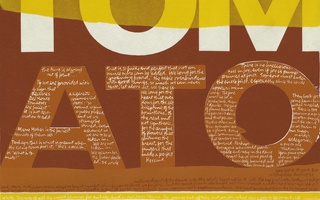Like many people, I spent spring break as productively as possible: Binge-watching Netflix. "House of Cards" recovered from a lackluster season 3 with a vengeance, the Punisher was the best thing to happen to "Daredevil," and I finally started "Cowboy Bebop"…before I switched to the new season of "Daredevil" when it came out.
This isn’t to state that I like the latter significantly more than the former (and in fact, I think both are really good). Rather, "Daredevil," "Orange is the New Black," "Game of Thrones," and other massive television shows have become cultural touchstones, making them popular subjects of analysis, conversation, and enjoyment across society. It’s not hard to see why: With streaming services cutting into the market of television corporations, the two have battled for revenue by acquiring, creating, and broadcasting high-quality television exclusively on their own platforms. This competition has given us an era of “peak T.V.” where it’s tempting to lock ourselves up in a bunker to watch it all.
But even if we wanted to watch all this great television, there are only so many hours in a day, limiting the amount of television it’s possible to watch or invest in. It makes sense then to focus on the most culturally salient shows. Life as a young adult in a big city is now better encapsulated by "Girls" and "Broad City" than by "Sex in the City"; "House of Cards" better depicts the public’s current opinion of the political system than "Veep" or "The West Wing"; other examples abound. Put simply, pop culture reflects and reveals popular beliefs.
While this means that pop culture might be a good way to initially connect with someone, popular art—be it music, books, or television—rarely deal with less widely shared and widely discussed aspects of ourselves. Pop culture, and discussions about it, largely riffs on the same few themes, limiting the scope of what can be talked about. There are only so many ways to react to the archetypical "Breaking Bad"; even if someone articulates what they took away from the experience, there is a high chance you will have already heard that takeaway before—regardless of whether or not you’ve actually seen it.
Why settle for only discussing art that you and everyone you know are going to spend a Sunday watching in your pajamas? At some point, all of us have found art that has spoken to us on a personal level; sharing art or television in that category with those whom we want to know us better can be so much more valuable than simply discussing what’s popular again and again. For example, while we all enjoy pop music to an extent, we bond more deeply over personally significant music; an album or even a single can communicate volumes about a person’s values, goals, and experiences, and even if another listener doesn’t glean the same meaning, the cost of sharing is essentially non-existent.
With its ability to spin complex narratives, television, novels, and films have the potential to communicate even more about us than just one song. On the other hand, the cost of failing to bond over this art—wasting time—may appear steep enough to seem dissuasive, but it’s still possible to reduce the necessary commitment and introduce someone to a personal touchstone. Rather than showing someone an entire series and telling them why you like it, you can recommend your favorite episode—or favorite episodes—and discuss how it crystallizes the personal significance of the work as a whole. In addition to mitigating the potential cost of time wasted, there is value in being able to concisely articulate why pieces of art are significant to you. Even if you don’t ultimately share your takeaways, you gain self-knowledge from recognizing how and why that art matters to you.
Great popular art speaks to us because it illustrates the current zeitgeist, but personal art speaks to us because it illuminates our own experience. Sharing such art may take work—it might even be scary—but using it to communicate that experience to close friends can ultimately be more validating.
Hansy D. Piou ’18, a Crimson editorial writer, is an applied mathematics concentrator living in Lowell House.
Read more in Opinion
Obama's Disillusioned DoctrineRecommended Articles
-
DISSECTING THE Mass-Cultural BEASTWhen Spy magazine set out to list the 50 stupidest college courses in America, they found an easy target in
-
ECAC Probes TV Effects on Gate ReceiptsTelevision's effect on attendance at college sporting events will be one of the main topics of discussion when the Eastern
-
Tycoon Club Call For Philip Morris Is New TeleviserTen hustlers from Harvard's own school for hustlers--the Business School across the Charles--chipped in 300 Philip Morris wrappers apiece last
-
Leverett Gets TV SetLeverett House last night inaugurated its first television set with a party. The set is located in a new common
-
 Redefining Pop: Harvard Art Museums’ New Exhibit Explores Corita Kent
Redefining Pop: Harvard Art Museums’ New Exhibit Explores Corita Kent













